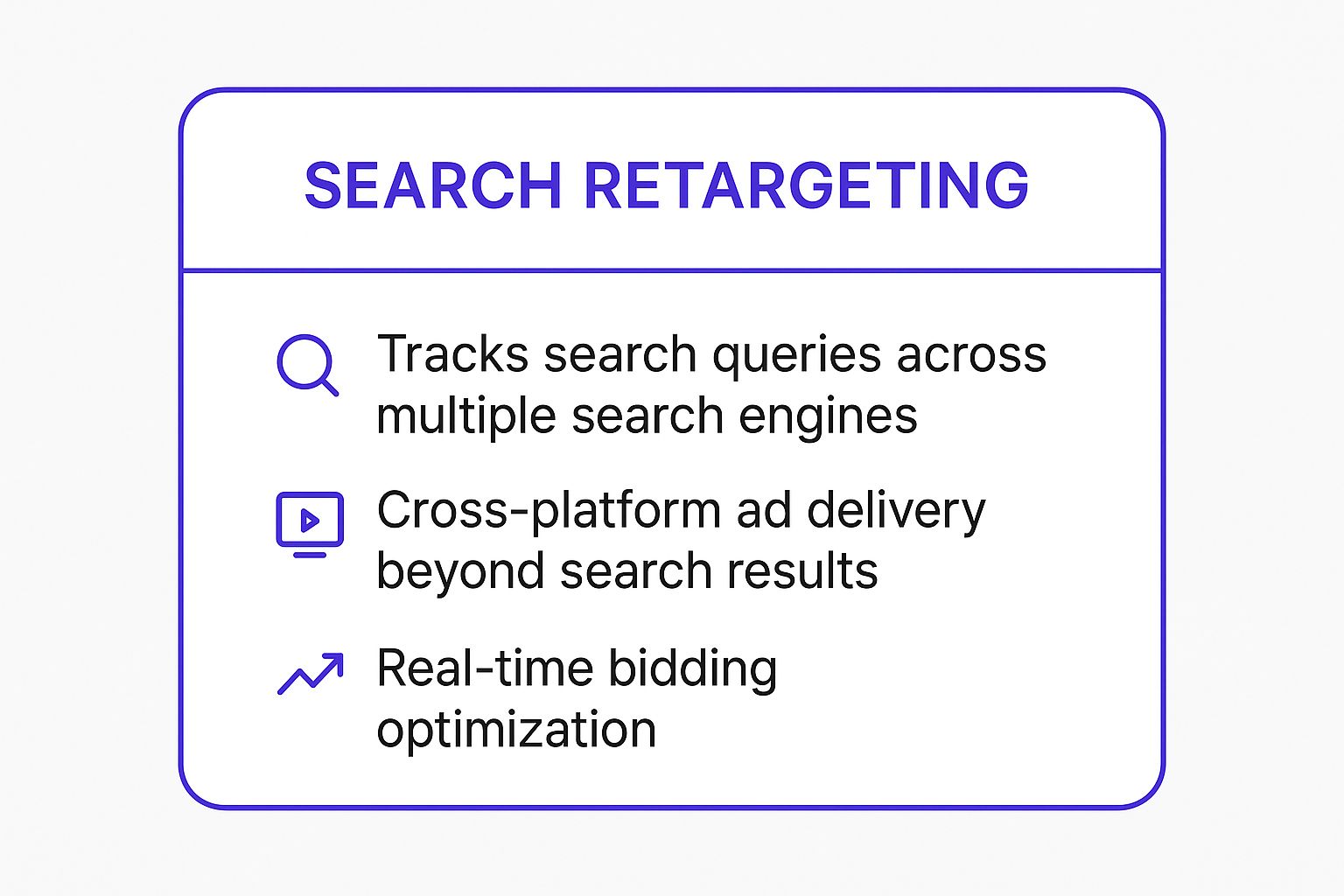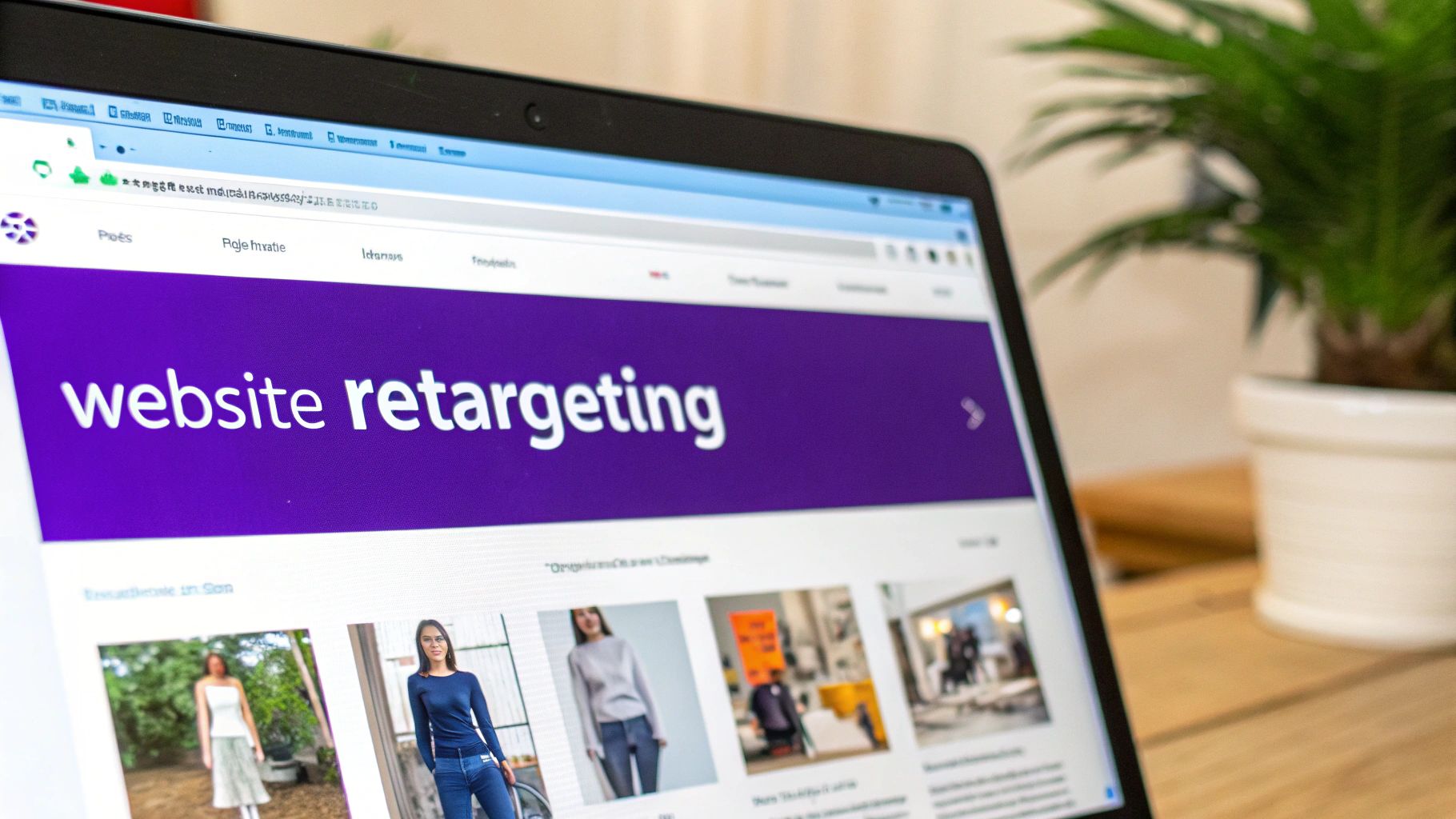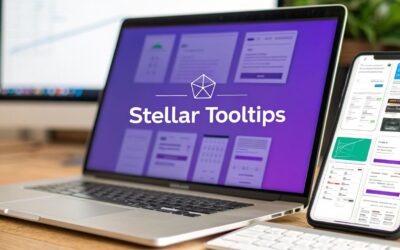In marketing, timing and context are everything. Sending the right message to the right person is crucial, but sending it at the right moment based on their actions is what separates good campaigns from great ones. This is the power of behavioral targeting, a strategy that moves beyond simple demographics to connect with users based on their digital footprints, such as their browsing history, purchase patterns, and content engagement. It allows you to deliver hyper-relevant experiences that feel less like advertising and more like a helpful conversation.
This article dives deep into practical, real-world behavioral targeting examples that you can implement today. We will move beyond theory and dissect the specific triggers, strategic designs, and measurable results behind successful campaigns. You'll learn how to replicate these tactics, from search and website retargeting to advanced email segmentation and location-based offers. Each example includes a strategic breakdown, key insights, and actionable steps, featuring tutorials using Divi Areas Pro to help you build these powerful systems on your own WordPress site. Prepare to see how user actions can unlock your most effective marketing funnels.
1. Search Retargeting
Search retargeting is a powerful form of behavioral targeting that connects a user’s search intent with display and social media advertising. Unlike standard retargeting, which targets users who have visited your website, search retargeting targets users based on the specific keywords they have searched for on engines like Google or Bing, even if they never visited your site.
This technique bridges the gap between high-intent search behavior and passive browsing. For example, a user who searches for “all-inclusive resorts in Mexico” is a prime candidate for a travel agency's ads. Using search retargeting, that agency can display banner ads for Mexican vacation packages on news websites, blogs, and social media platforms the user visits later. This keeps the brand top-of-mind long after the initial search is complete.
Strategic Analysis & Actionable Insights
Leading platforms like Criteo and Google Ads leverage this by tracking keyword-level search data and using it to serve relevant ads across their vast display networks. The core strategy is to capture purchase intent at its peak.
Strategic Point: The primary advantage of search retargeting is its ability to reach high-intent prospects who have not yet discovered your brand. It expands your reach beyond your website visitors to an audience that has explicitly signaled interest in your product or service category.
To effectively implement this, focus on precision. Use negative keyword lists to filter out irrelevant searches, such as “free,” “jobs,” or competitor brand names if you're not running a conquesting campaign. Also, set strict frequency caps to avoid ad fatigue, which can create a negative brand perception.
Key Features of Search Retargeting
Here is a quick reference summarizing the core components that make search retargeting one of the most effective behavioral targeting examples.

These features work together to create a seamless advertising experience, engaging users with highly relevant content based on their immediate search needs, no matter where they browse online.
2. Website Retargeting
Website retargeting is one of the most foundational and effective behavioral targeting examples. It works by tracking visitors to your website and then displaying targeted ads to them as they browse other sites and social media platforms. The mechanism relies on a small piece of code, often called a pixel, which anonymously "follows" your users online, reminding them of your brand and encouraging them to return.

This strategy is highly effective because it focuses on a "warm" audience that has already demonstrated interest in your products or services by visiting your site. For example, a user who browses specific hiking boots on an e-commerce store but leaves without buying can be shown ads for those exact boots on their social media feed. This timely reminder can be the final push needed to complete the purchase, making it a cornerstone for e-commerce and lead generation alike.
Strategic Analysis & Actionable Insights
Platforms like Google Ads, Facebook Ads, and AdRoll have popularized this tactic, making it accessible to businesses of all sizes. The core strategy is to re-engage users who have shown specific on-site behaviors, such as viewing a product, adding an item to the cart, or visiting a pricing page, but failed to convert.
Strategic Point: The power of website retargeting lies in its ability to segment audiences with extreme precision based on their on-site journey. You can create different campaigns for users who visited your homepage versus those who abandoned a cart, delivering hyper-relevant messaging to each.
To maximize its effectiveness, go beyond generic "come back to our site" ads. Create specific audience lists for different stages of the funnel. For instance, show product testimonials to users who viewed a product page and offer a small discount to those who abandoned a cart. It is also crucial to implement exclusion lists to stop showing ads to recent converters, which prevents ad spend waste and avoids annoying loyal customers.
Key Features of Website Retargeting
Here is a quick reference summarizing the core components that make website retargeting a must-have for any digital marketing strategy.
- Pixel-Based Tracking: Uses a simple JavaScript snippet on your website to anonymously identify and tag users, creating a retargeting audience.
- Audience Segmentation: Allows for the creation of granular audience lists based on specific pages visited, time spent on site, or actions taken (e.g., adding to cart).
- Dynamic Creative Optimization (DCO): Can automatically show users ads featuring the exact products or services they viewed on your website, a highly personalized and effective tactic.
These features enable marketers to craft a persistent and personalized follow-up sequence, dramatically increasing conversion rates by staying top-of-mind with an already interested audience.
3. Email Behavioral Segmentation
Email behavioral segmentation is a marketing technique that groups email subscribers based on their direct interactions with a brand. This goes beyond simple demographics, focusing on actions like purchase history, website activity, email opens, click-through rates, and overall engagement levels. By analyzing these behaviors, marketers can deliver highly personalized and timely email campaigns that resonate with each user's specific context and interests.
This method transforms a one-size-fits-all email blast into a tailored conversation. For instance, an e-commerce store can send a cart abandonment sequence to a user who added items but didn't check out. Similarly, Netflix recommends new shows based on your viewing history, and Spotify’s "Wrapped" campaign is a masterclass in using listening behavior to create a deeply personal and shareable experience. These are all powerful behavioral targeting examples that drive engagement and loyalty.
Strategic Analysis & Actionable Insights
Platforms like Klaviyo and Mailchimp have popularized this strategy, providing sophisticated tools to track user actions and automate triggered email flows. The core principle is to use subscriber behavior as a direct signal of their intent and needs, allowing for more relevant communication. To truly unlock the power of your campaigns, consider these effective email marketing tips for advanced behavioral segmentation.
Strategic Point: The key advantage of email behavioral segmentation is its ability to increase relevance and timeliness, which directly boosts open rates, click-through rates, and conversions. It moves marketing from a monologue to a dynamic dialogue responsive to user actions.
To implement this effectively, start with fundamental segments such as new subscribers, repeat customers, and inactive users. From there, build more complex triggers based on page views (e.g., viewing a specific product category three times) or purchase frequency. A/B test your content and subject lines for each segment to continuously optimize performance and prevent subscriber fatigue.
Key Features of Email Behavioral Segmentation
Here is a quick reference summarizing the core components that make email behavioral segmentation a cornerstone of modern digital marketing.
- Action-Based Triggers: Automates email sends based on user actions like cart abandonment, first purchase, or website inactivity.
- Dynamic Content Personalization: Customizes email content, such as product recommendations or special offers, based on an individual’s past behavior and preferences.
- Lifecycle Stage Targeting: Delivers different messages to users depending on where they are in the customer journey, from new leads to loyal advocates.
These features enable marketers to build stronger relationships with their audience. If you're using Divi and want to enhance your lead generation efforts for segmentation, you can learn more about how to grow your email list on DiviMode.com.
4. Social Media Behavioral Targeting
Social media behavioral targeting leverages user actions, interests, and engagement patterns directly within social platforms to deliver highly personalized advertising. This approach analyzes a rich dataset of social signals, including likes, shares, comments, page follows, and video view duration, to build detailed user profiles for precise ad delivery.

Unlike other methods that infer interest, social media targeting acts on explicit user behavior within a closed ecosystem. For instance, a user who frequently engages with posts from hiking gear accounts on Instagram can be added to an audience for a new waterproof boot launch. Platforms like Facebook and LinkedIn excel at this, allowing advertisers to target users based not just on their interests but also on their professional roles or life events, making it one of the most versatile behavioral targeting examples.
Strategic Analysis & Actionable Insights
Platforms like Meta (Facebook and Instagram) and LinkedIn Marketing Solutions are pioneers in this space, offering sophisticated tools to turn social interactions into conversions. The strategy is to meet users where they are most engaged and present offers that align with their expressed identities and passions. For a deeper dive into platform-specific tactics, explore these social media marketing tips from divimode.com.
Strategic Point: The core strength of social media behavioral targeting is its ability to combine demographic, interest-based, and behavioral data into layered audiences. This creates hyper-specific segments that are nearly impossible to replicate on other channels.
To execute this effectively, go beyond basic interest targeting. Use Custom Audiences to retarget users who have watched a certain percentage of your video ads or engaged with your Instagram profile. Layer this with demographic filters, like job title on LinkedIn or "newly engaged" status on Facebook, to achieve maximum relevance and ROI. Always monitor frequency metrics to avoid oversaturating your audience and causing ad fatigue.
Key Features of Social Media Behavioral Targeting
Here is a quick reference summarizing the core components that make social media behavioral targeting a cornerstone of modern digital advertising.
- Interaction-Based Audiences: Create segments of users who have liked, commented, shared, or saved your posts, or even messaged your page.
- Lookalike Audience Expansion: Find new users who share the behavioral characteristics of your best customers or most engaged followers.
- Platform-Native Data: Utilizes first-party data collected directly by the social network, ensuring high accuracy and relevance.
These features allow marketers to create a continuous feedback loop, refining audiences based on real-time engagement and driving increasingly effective campaign performance.
5. Purchase History Targeting
Purchase history targeting is a foundational behavioral targeting technique that uses a customer’s past transactional data to inform current and future marketing efforts. By analyzing what customers have bought, how often they buy, and how much they spend, businesses can deliver highly personalized product recommendations, special offers, and content that resonates with their known preferences.
This strategy moves beyond broad demographic segments to treat customers as individuals with unique tastes. For example, Amazon’s iconic “Customers who bought this also bought” feature is a prime example of purchase history targeting in action. Similarly, the Starbucks app remembers a user’s favorite drinks and suggests them for quick reordering, while Sephora’s Beauty Insider program uses past purchases to recommend new products that complement a customer’s beauty profile. This creates a frictionless and relevant shopping experience.
Strategic Analysis & Actionable Insights
Platforms like Shopify and Salesforce Commerce Cloud have built-in capabilities that allow merchants to segment customers based on their buying habits. The core strategy is to leverage existing customer data to increase lifetime value (LTV) and encourage repeat business by demonstrating a deep understanding of customer needs.
Strategic Point: The key advantage of purchase history targeting is its reliance on actual, confirmed behavior rather than inferred interest. A purchase is the strongest signal of intent, making this data incredibly reliable for predicting future needs and driving upsells, cross-sells, and customer loyalty.
To implement this effectively, combine recency, frequency, and monetary (RFM) analysis to identify your most valuable customers. For instance, a customer who recently made a high-value purchase is a prime candidate for a follow-up offer. You can also use this data to trigger targeted popups; for example, showing a special discount on a related product category after a customer completes a purchase. For a deeper dive, explore these strategies on how to increase eCommerce sales with popups on DiviMode.com.
Key Features of Purchase History Targeting
Here is a quick reference summarizing the core components that make purchase history one of the most reliable behavioral targeting examples.
- RFM Analysis: Segments customers by Recency, Frequency, and Monetary value to identify high-value groups.
- Predictive Recommendations: Uses algorithms (like collaborative filtering) to suggest products that similar customers have purchased.
- Lifecycle-Based Personalization: Delivers different offers to new buyers, loyal customers, and at-risk or churned customers based on their purchase timeline.
These features work in unison to transform raw sales data into a powerful engine for creating personalized shopping journeys that boost retention and revenue.
6. Geographic and Location-Based Targeting
Geographic and location-based targeting uses a user's physical location, derived from data like GPS, IP addresses, or Wi-Fi networks, to deliver highly contextual advertisements and content. This method goes beyond simple country or city-level targeting by incorporating real-time location, location history, and movement patterns to infer user interests and immediate needs.
This technique is incredibly effective because it taps into the user's current context. For instance, a fast-food chain like McDonald's can use geofencing to serve a coupon to a user's smartphone the moment they drive past a competitor's restaurant. Similarly, a retailer can show ads for umbrellas and raincoats to users in a city where a sudden downpour has just started. This hyper-relevance often leads to higher engagement and conversion rates.
Strategic Analysis & Actionable Insights
Platforms like Google Maps and Waze pioneered this by integrating location-based ads directly into their services. The strategy is to align marketing messages with the user’s physical environment and likely intent. A person searching for directions to a home improvement store is a prime audience for a competitor's offer just down the street.
Strategic Point: The core strength of geographic targeting is its ability to deliver messages with immediate, real-world utility. It connects digital advertising to a user’s physical journey, making the call-to-action more compelling and timely than almost any other form of targeting.
To implement this effectively, go beyond basic geofencing. Use location history to understand commuting patterns, identifying a user's "work" and "home" areas for relevant offers. For example, a coffee shop can target commuters near its location during morning hours. Furthermore, to refine your location-based targeting strategies, conducting a comprehensive geo audit can help identify and rectify data inaccuracies, ensuring more effective campaigns.
Key Features of Geographic and Location-Based Targeting
Here is a quick reference summarizing the core components that make this approach one of the most powerful behavioral targeting examples.
- Geofencing & Geoconquesting: Creates virtual perimeters around specific locations (geofencing) or competitor locations (geoconquesting) to trigger ads when a user enters or exits the area.
- IP Address & GPS Data: Uses IP addresses for broader geo-targeting (city, state) and GPS data from mobile devices for precise, real-time location tracking.
- Location History & Pattern Analysis: Analyzes past location data to understand user routines, such as daily commutes or frequently visited places, enabling predictive targeting.
These features allow marketers to create campaigns that are not just personalized but also perfectly timed to a user's real-world activities and environment.
7. Content Consumption Behavioral Targeting
Content consumption behavioral targeting analyzes the specific types of content users engage with, how long they spend consuming it, and their interaction patterns. This data is then used to deliver highly personalized content recommendations and relevant advertisements. The technique goes beyond simple page views, tracking metrics like reading time, scroll depth, video completion rates, and content sharing behaviors to build a rich profile of a user's interests.
This method is the engine behind many of today's most popular digital platforms. For instance, YouTube’s recommendation algorithm personalizes your homepage based on your watch history and video completion rates. Similarly, Medium suggests articles based on topics you've previously read and clapped for, and Spotify curates its famous "Discover Weekly" playlists by analyzing your listening habits, skipped tracks, and liked songs. This makes for a deeply engaging user experience that encourages longer session times.
Strategic Analysis & Actionable Insights
Platforms like Netflix and YouTube have perfected this by tracking granular interaction data to predict future interests and reduce churn. The core strategy is to create a 'sticky' ecosystem where users feel understood and are constantly presented with valuable new content, making it harder for them to leave.
Strategic Point: The key advantage of content consumption targeting is its ability to build user loyalty and increase session duration. By understanding what a user truly values, not just what they click on, you can deliver an experience that feels uniquely tailored and indispensable.
To implement this effectively, go beyond basic clicks. Track multiple engagement signals such as scroll depth for articles or watch time for videos. Implement a content decay factor to ensure that recommendations don't rely on old, potentially irrelevant interests. For a Divi site, you could use Divi Areas Pro to show a pop-up promoting an advanced guide only after a user has spent a certain amount of time on a related beginner-level blog post, indicating deep engagement.
Key Features of Content Consumption Behavioral Targeting
Here is a quick reference summarizing the core components that make content consumption targeting one of the most powerful behavioral targeting examples for fostering long-term engagement.
- Multi-Signal Tracking: Analyzes a wide range of engagement metrics like watch time, scroll depth, likes, and shares, not just clicks or page views.
- Predictive Personalization: Uses historical consumption data and machine learning to forecast a user's future interests and serve relevant content proactively.
- Algorithmic Curation: Employs sophisticated algorithms to create personalized feeds, playlists, and recommendation carousels in real-time.
These features work in concert to create a feedback loop where improved personalization leads to deeper engagement, which in turn provides more data for even better personalization.
Behavioral Targeting Methods Comparison
| Targeting Type | 🔄 Implementation Complexity | 💡 Resource Requirements | 📊 Expected Outcomes | 💡 Ideal Use Cases | ⭐ Key Advantages |
|---|---|---|---|---|---|
| Search Retargeting | High – requires sophisticated tracking and real-time bidding systems | High – cross-platform integration, keyword segmentation | High intent capture, extends reach beyond search results | E-commerce, travel, high-consideration purchases | Cost-effective, multi-touch customer journey |
| Website Retargeting | Medium – pixel installation and behavior segmentation | Medium – website traffic and pixel management | 70% higher conversion lift on retargeted users | Retail, SaaS, abandoned cart recovery | High conversion rates, behavior depth segmentation |
| Email Behavioral Segmentation | High – complex segmentation and automation setup | High – robust email platform and data volume | 14.31% higher opens, 100.95% higher CTR | Email marketing for engaged subscribers | Personalized content, improved lifetime value |
| Social Media Behavioral Targeting | Medium to High – platform-specific policies and data integration | Medium to High – access to social data/APIs | Large audience reach with rich social engagement data | Social advertising across platforms | Native ads, advanced lookalike modeling |
| Purchase History Targeting | Medium – requires purchase data analytics and predictive models | Medium – transactional database and modeling | 6-10% revenue increase via personalized recommendations | Retail and subscription businesses | High relevance, increased order value |
| Geographic & Location-Based Targeting | Medium – GPS, geofencing technologies, and context data | Medium – location data collection and processing | Drives foot traffic, highly context relevant offers | Local businesses, event promotion, physical stores | Local personalization, competitor targeting |
| Content Consumption Behavioral Targeting | High – advanced content tracking and sentiment analysis | High – content categorization and engagement metrics | Up to 40% increase in content engagement | Media platforms, content sites, streaming services | Deep user insights, improved user experience |
Putting It All Together: Your Blueprint for Smarter Targeting
We've explored a powerful array of behavioral targeting examples, moving far beyond generic theory into the practical, results-driven world of personalized user experiences. From capturing intent with search retargeting to nurturing loyalty through purchase history segmentation, the core lesson is clear: the most effective marketing doesn't shout at everyone, it whispers the right message to the right person at the right time.
These examples demonstrate that successful behavioral targeting isn't about having a massive budget or a complex suite of enterprise tools. It's about being observant, strategic, and user-centric. It’s about understanding the digital body language of your audience and responding in a way that is helpful and relevant, not intrusive.
Key Takeaways for Immediate Action
To transform these insights into your own success stories, focus on these foundational principles:
- Start with a Single, Clear Goal: Don't try to implement all seven strategies at once. Choose one high-impact area, like reducing cart abandonment with website retargeting or boosting engagement with content-aware CTAs. Define what success looks like and build from there.
- Map the User Journey: Before you create a trigger, you must understand the path a user takes. Identify key decision points, moments of friction, and opportunities for a personalized nudge. This map becomes your strategic blueprint.
- Prioritize the User Experience: The goal is to be helpful, not creepy. Ensure your targeted messages add genuine value. An exit-intent popup offering a discount is helpful; an ad for a product you viewed once following you for a month is annoying. The difference lies in the value proposition.
- Leverage the Right Tools: The technical barrier to implementing these strategies is lower than ever. Tools like Divi Areas Pro, directly integrated into your WordPress and Divi ecosystem, make it possible for designers and developers to execute sophisticated targeting without custom code.
The True Value of Behavioral Targeting
Mastering the techniques we've covered elevates your role from a web designer or marketer to a digital strategist. You stop building static pages and start creating dynamic, responsive digital environments that adapt to individual user needs. This proactive approach is what separates good websites from great ones.
By thoughtfully applying these behavioral targeting examples, you can create websites that not only look beautiful but also work smarter. You can drive more conversions, foster deeper brand loyalty, and deliver a demonstrably higher return on investment for your clients or your own business. The path forward is about building a more intelligent, personalized web, one strategic interaction at a time. Your journey to smarter targeting starts now.
Ready to implement these powerful behavioral targeting strategies directly within your Divi workflow? Divimode offers the ultimate toolkit, including Divi Areas Pro, to create dynamic, personalized content without writing a single line of code. Visit Divimode to see how you can transform your static Divi site into an intelligent, conversion-focused machine.






